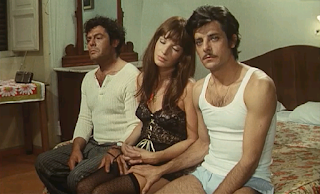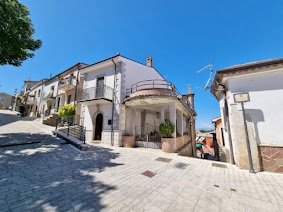Filippo De Pisis - painter and poet
Artist known for extravagant lifestyle
The painter and poet Filippo De Pisis, whose works grace the Museum of Modern Art in New York, the Peggy Guggenheim Collection in Venice and the Palazzo Ruspoli in Rome among other galleries, was born Luigi Filippo Tibertelli De Pisis in Ferrara on this day in 1896. A close associate for a while of Giorgio de Chirico and Carlo Carrà, De Pisis is best known for his cityscapes, metaphysically-inspired maritime scenes, and still life pictures, especially depicting flowers. De Pisis, who was homosexual, also made many homoerotic sketches of the male nude. Later in life, he lived in Venice and became somewhat eccentric, travelling everywhere in his personal gondola. Born into a noble family, as a boy he was known as Gigi. He was educated at home and was strongly influenced by his sister, Ernesta Tibertelli, who was a distinguished illustrator with libertarian views, and who probably introduced De Pisis to mystical writings. De Pisis spent his childhood reading, drawing, collecting butterflies and wildflowers and writing poetry. He studied literature and philosophy at the University of Bologna, and published a volume of poems, Canti della Croara, in 1916. Read more…
_______________________________________
Fanny Cerrito - ballerina
Neapolitan star thrilled audiences across Europe
One of the most famous ballerinas of the Romantic era, Francesca 'Fanny' Cerrito was born on this day in 1817, in Naples. Her talent for dancing emerged early and after training in the ballet school of the famed Naples opera house Teatro di San Carlo she made her debut there in 1832, aged only 15. She quickly became the darling of San Carlo and wowed dance audiences in many Italian cities. By the age of 21 she had obtained the position of prima ballerina at La Scala in Milan, working under the direction of Carlo Blasis, another Neapolitan, who was renowned for his rigorous and exacting classes. When Cerrito and the Swedish-born ballerina, Marie Taglioni, who had Italian heritage, danced in the same programme in Milan, the event caused considerable excitement in the city, with audiences divided in their support for one or the other. Cerrito's fame spread around Europe and for nine seasons between 1840 and 1848 she became a major attraction at Her Majesty’s Theatre, London, where she worked with the French choreographer Jules Perrot and enjoyed what many critics regarded as her finest performance in Cesare Pugni's Ondine. Read more…
____________________________________
Valentino Garavani - fashion icon
Designer favoured by the world's best dressed women
The fashion designer best known simply as Valentino was born in Voghera, a town about 70km (43 miles) south of Milan in the province of Pavia, on this day in 1932. The favourite designer of the world’s best dressed women from the 1960s onwards, he built up a business that he eventually sold for $300 million. Born Valentino Clemente Ludovico Garavani, he became interested in fashion while still in primary school. After working initially for his aunt Rosa, with the financial support of his parents he moved to Paris to pursue his interest, studying at the École des Beaux-Arts and at the Chambre Syndicale de la Couture Parisienne. His first taste of working life came in the salons of Jean Dessès and Guy Laroche. Armed with the knowledge and experience he gained at the feet of two French masters, he left Paris in 1959 to set up his first fashion house in Rome, on the fashionable Via Condotti. He quickly gained kudos for his bright red dresses, in a shade that became widely known as "Valentino red." In July 1960, Valentino met Giancarlo Giammetti at the Café de Paris on the Via Veneto in Rome. Read more…
_____________________________________
Ignazio Fiorillo – composer
Talented Neapolitan influenced music in Germany
Ignazio Fiorillo, who is remembered as an opera seria composer, was born in Naples on this day in 1715. Fiorillo often composed music for the libretti of the acclaimed writer, Pietro Metastasio, creating the type of noble and serious operas that were fashionable in Europe in the 18th century. After studying music at the Naples Conservatory, Fiorillo composed the opera L’egeste, which premiered in Trieste in 1733. Another of his operas, Mandane, was first performed at the Teatro Sant’Angelo in Venice in 1736. Fiorillo was later engaged as a composer for an ensemble specialising in performances for children and toured Europe with them. In 1749 they stayed in Braunschweig in Germany at the court of Carl I von Braunschweig-Wolfenbüttel. Fiorillo was appointed court composer the following year and during his remaining time at Braunschweig composed most of his operas. He became composer to the court of Frederick II Landgrave of Hesse-Kassel in 1762 and went on to improve significantly the quality of court opera in Kassel. He also composed intermezzi and stage music for court theatre. Read more…

.jpg)


.jpg)

.jpg)
.jpg)

.jpg)
.jpg)

.jpg)

.jpg)

.jpg)

